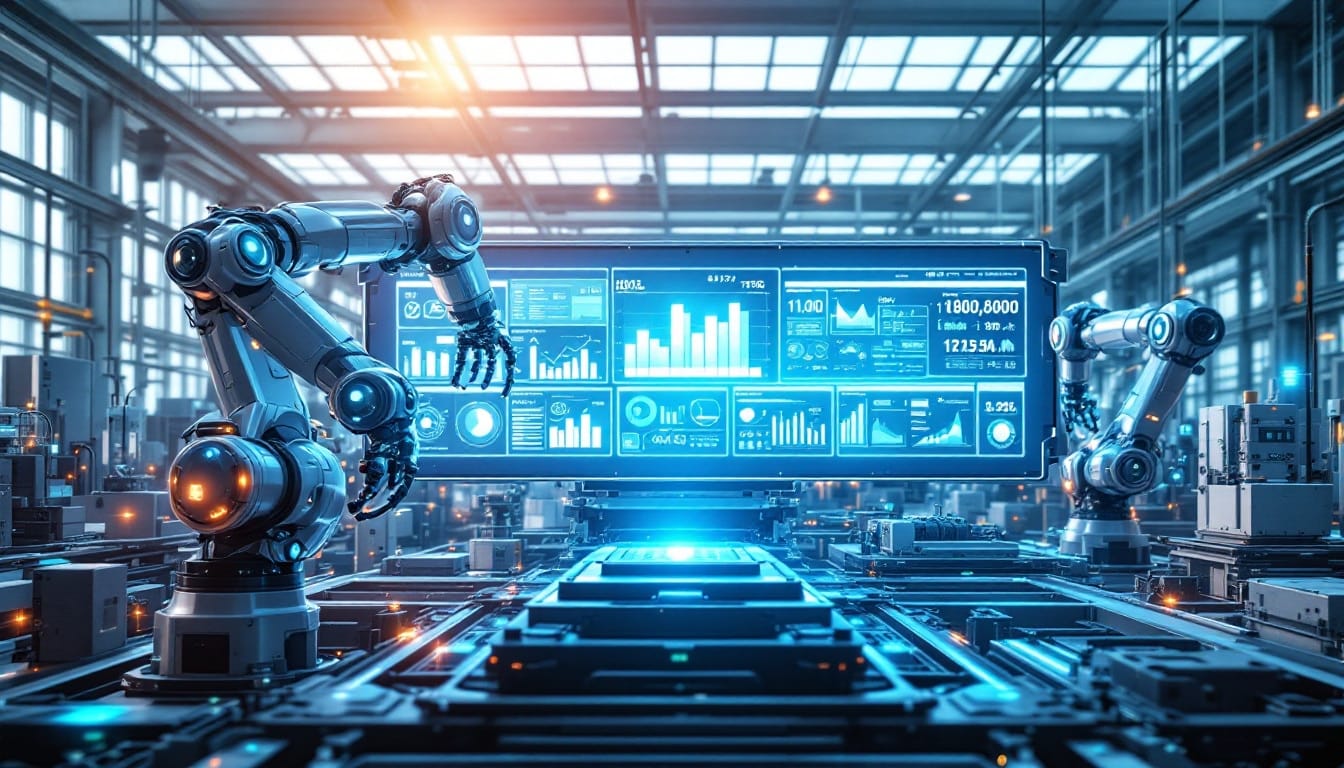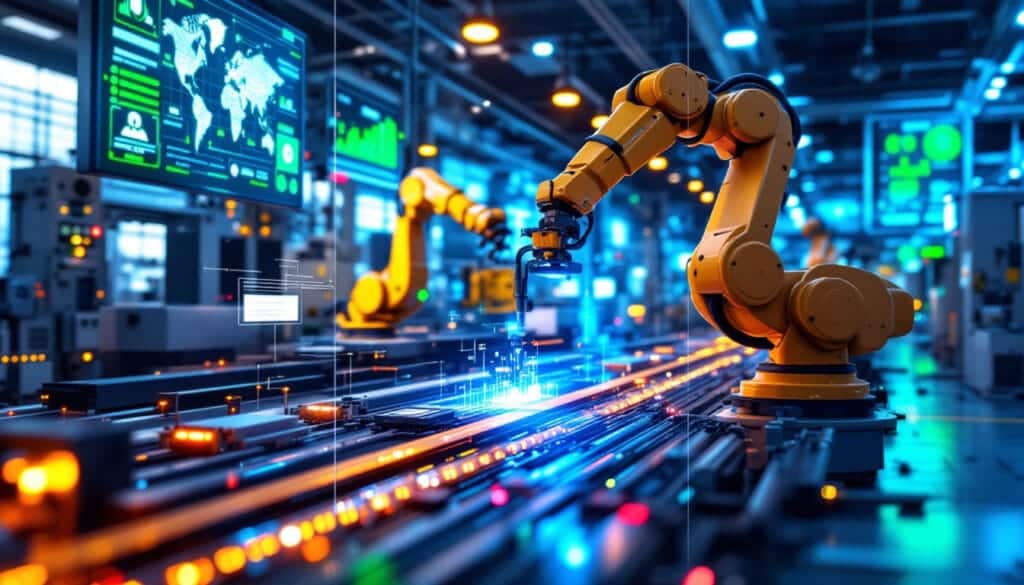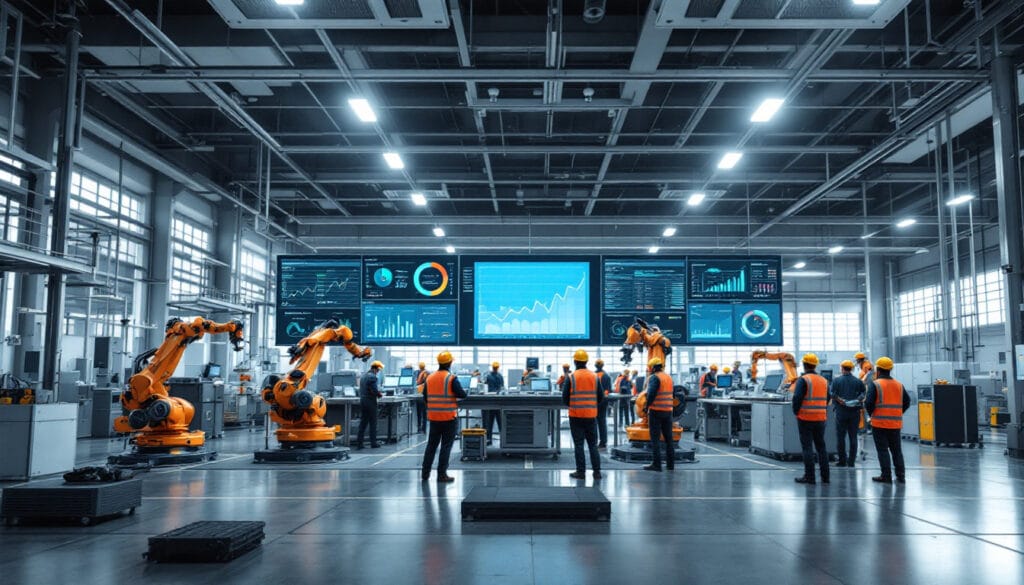“`html
Your experience on our site deserves the best conditions. That’s why certain essential features require specific settings. Make sure JavaScript is enabled and ad blockers are disabled.
We designed our platform to provide smooth and interactive navigation. By enabling JavaScript, you will fully enjoy the advanced features we offer. Additionally, disabling ad blockers supports our quality content. Together, we can ensure an optimal user experience.

Table des matières
ToggleIntroduction to IIoT Sensors in Intelligent Manufacturing
In today’s landscape of Industry 4.0, IIoT sensors (Industrial Internet of Things) play a central role in transforming manufacturing processes. These smart devices enable real-time data collection, thus facilitating quick and informed decision-making. By integrating advanced sensors, companies can optimize their operations, reduce costs, and improve product quality. This technological revolution paves the way for smart manufacturing, where the efficiency and resilience of supply chains are continually enhanced.
How Do IIoT Sensors Transform Industrial Production?
IIoT sensors transform industrial production by introducing advanced automation and continuous monitoring of processes. With these sensors, machines can communicate with each other and with management systems, allowing for seamless coordination. For example, temperature and pressure sensors installed on manufacturing machines can detect anomalies before they become critical, thus avoiding costly production stoppages.
Moreover, the integration of IIoT sensors allows for predictive maintenance. By analyzing the collected data, companies can anticipate maintenance needs, thus extending the lifespan of equipment and reducing unexpected downtime. This proactive approach improves not only operational efficiency but also employee safety.
To learn more about how the Industrial Internet of Things is revolutionizing industrial processes, check out this resource.
What Are the Main Types of IIoT Sensors Used Today?
The IIoT sensor market is diverse, offering a variety of devices suited to different industrial needs. Among the most common are temperature, pressure, level, proximity, and vibration sensors. Each of these sensors plays a specific role in monitoring and controlling industrial processes.
Temperature sensors, for example, are essential for industries where thermal management is crucial, such as metallurgy or the food sector. Pressure sensors are used in hydraulic and pneumatic systems to ensure safe and efficient operation. Level sensors monitor the reserves of raw materials or finished products, thus ensuring optimal stock management.
For an in-depth analysis of the different types of IIoT sensors, check out this page.
What Benefits Do IIoT Sensors Bring to Supply Chains?
The integration of IIoT sensors in supply chains offers numerous advantages, particularly in terms of visibility, efficiency, and responsiveness. Thanks to the real-time data provided by the sensors, companies can track every stage of their supply chain with increased precision. This allows for better resource planning, more efficient stock management, and reduced delivery times.
Furthermore, IIoT sensors facilitate product traceability, which is essential to ensure quality and compliance with international standards. In case of issues, companies can quickly identify and isolate the source, thus minimizing disruptions and financial losses.
To understand how to optimize industrial production through personalized digital transformation services in Industry 4.0, visit this page.
What Are the Recent Innovations in IIoT Sensor Technologies?
IIoT sensor technologies are evolving rapidly, with constant innovations aimed at improving the accuracy, connectivity, and durability of devices. One of the major advances is the integration of artificial intelligence (AI) and machine learning in sensors, allowing for more sophisticated predictive analysis and autonomous process optimization.
In addition, the development of wireless and low-power sensors opens up new possibilities for their deployment in challenging or remote environments. These sensors can now operate autonomously for extended periods, thereby reducing maintenance needs and increasing reliability.
To explore the soaring growth predictions of the Industrial Internet of Things market, consult this article.
How Do IIoT Sensors Contribute to Supply Chain Resilience?
Supply chain resilience has become a crucial issue, especially in the face of recent disruptions such as the COVID-19 pandemic. IIoT sensors play a key role in strengthening this resilience through increased visibility and the ability to respond quickly to changes. By monitoring production conditions, stock levels, and delivery times in real-time, companies can anticipate and respond effectively to disruptions.
Moreover, IIoT sensors enable better collaboration among different actors in the supply chain. By sharing accurate and up-to-date data, partners can coordinate their actions more smoothly, thus reducing the risks of disruption and inefficiency.
To discover how the Industry 4.0 revolution impacts manufacturing and automation practices, consult this informative article.
What Are the Challenges of Implementing IIoT Sensors?
Despite their numerous advantages, the implementation of IIoT sensors also presents challenges that companies must overcome. One of the main obstacles is the issue of data security. With the increasing number of connected devices, vulnerability to cyberattacks strengthens, making it essential to deploy robust security measures.
Another challenge lies in integrating IIoT sensors with existing systems. Compatibility between new technologies and legacy infrastructures can sometimes pose technical problems and require additional investments. Furthermore, managing and analyzing the vast amounts of data generated by the sensors requires specialized skills and appropriate tools.
To understand how to optimize the integration of digital technologies in industry, refer to this article.
What Impact Do IIoT Sensors Have on Environmental Sustainability?
IIoT sensors also have a significant impact on the environmental sustainability of industrial operations. By enabling precise monitoring of resources used, these sensors help companies optimize their energy consumption and reduce waste. For example, energy consumption sensors can identify inefficiencies in production processes, allowing for adjustments to minimize the carbon footprint.
Moreover, IIoT sensors facilitate the implementation of predictive maintenance practices, which extend the lifespan of equipment and reduce the need for frequent machine replacements, thus contributing to a more sustainable circular economy.
To learn more about sustainable innovations in Industry 4.0, check out this article.
How to Choose the Right IIoT Sensors for Your Business?
The choice of appropriate IIoT sensors depends on several factors specific to each company. It is essential to assess operational needs, the types of data to be collected, and the goals to be achieved. For example, a production-focused company might prioritize precision sensors, while another focused on energy efficiency might turn to energy consumption sensors.
It is also important to consider the compatibility of sensors with existing systems and the ease of integration. The robustness and durability of the sensors should be suited to the industrial environment in which they will be deployed. Lastly, initial costs and long-term maintenance costs are crucial elements to consider to ensure optimal return on investment.
For an in-depth understanding of smart products and how they can be integrated into your industrial strategy, visit this resource.
What Is the Future of IIoT Sensors in Manufacturing?
The future of IIoT sensors in manufacturing is promising, with ongoing technological advancements that promise to further enhance operational efficiency and flexibility. The evolution toward smarter sensors, capable of processing and analyzing data directly on-site, will reduce reliance on centralized infrastructure and improve the speed of decision-making.
Moreover, interoperability among different devices and platforms will continue to improve, facilitating smoother integration and increased collaboration among various stakeholders in the supply chain. The rise of augmented and virtual reality in combination with IIoT sensors will create even more interactive and adaptive production environments.
To stay ahead of trends and predictions in the Industrial Internet of Things sector, consult this article.
Case Study: Digital Transformation Through IIoT Sensors
A renowned manufacturing company decided to integrate IIoT sensors into its production processes to improve its efficiency and responsiveness. By equipping its machines with vibration and temperature sensors, the company was able to implement an effective predictive maintenance system. This led to a 30% reduction in unplanned downtime, thereby increasing overall productivity.
Additionally, through the analysis of collected data, the company optimized its production flows, reducing waste and energy costs. The integration of IIoT sensors also facilitated better stock management, ensuring a constant availability of raw materials required for production.
To learn more about how personalized digital transformation services can optimize your industrial production, check out this resource.





